From bombing Sierra steeps to shredding the side of a volcano, these are our best bets for skiing way out West. Â
Crystal Mountain
Enumclaw, Washington
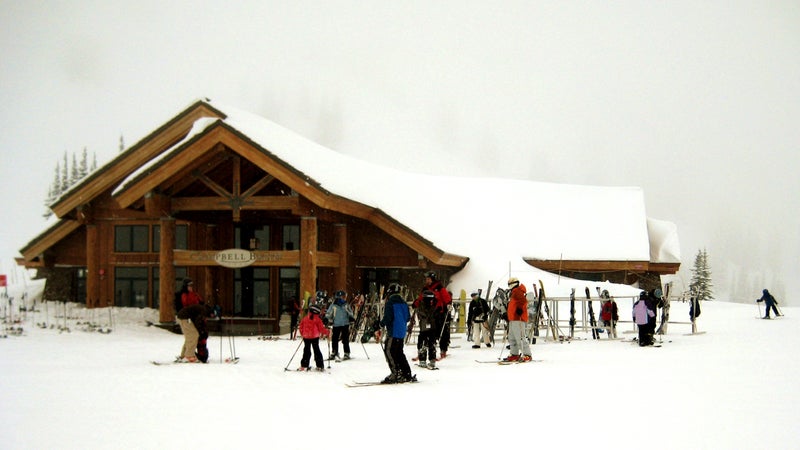
Vertical Rise: 3,100 feet
Acres of Terrain: 2,600
Average Snowfall: 486 inches
When it’s good at , Washington, it’s really good. Deep, light, bottomless snow falls by the truckload, and, magically, it always feels like you have the mountain to yourself. Located in the shadows of Mount Rainier about two hours from Seattle, Crystal Mountain is Washington’s largest ski area. Ride the Rainier gondola to the top, snap a scenic portrait with the mountain in the background, then lap the Green Valley chair for a warm-up. Experts will flock to the gladed steeps on Bear Pits and powder-stuffed tree-skiing on the Northway chair. Intermediates will love rolling runs like Lucky Shot, off Rainier Express (“Rex,” as the locals call it). The hike-to Southback country—including 7,012-foot Silver King—is well worth the slog for experts looking for a backcountry-style experience. The base area has minimal infrastructure—a few condos, a standard base lodge, and a taco truck. Got an RV or camper van? An entire section of the parking lot is dedicated to overnight campers. That’s how cool Crystal Mountain is. —˛Ń±đ˛µ˛ą˛ÔĚý˛Ńľ±ł¦łó±đ±ô˛ő´Ç˛Ô
Must-Ski Run: Take Chair 6 to the top of Powder Bowl, then drop in for what could be the best turns of your life.
Best Après: A platter of nachos and a pitcher of Manny’s Pale Ale at the Snorting Elk Cellar, on the basement level of the Alpine Inn.
Local Tip: Planning to head to the King? Bring a backpack loaded with avy gear (it’s controlled, but ski patrol still recommends you bring your gear), and you can stash your pack at the base of Rainier Express while you’re skiing the rest of the mountain.
Heavenly
South Lake Tahoe, California
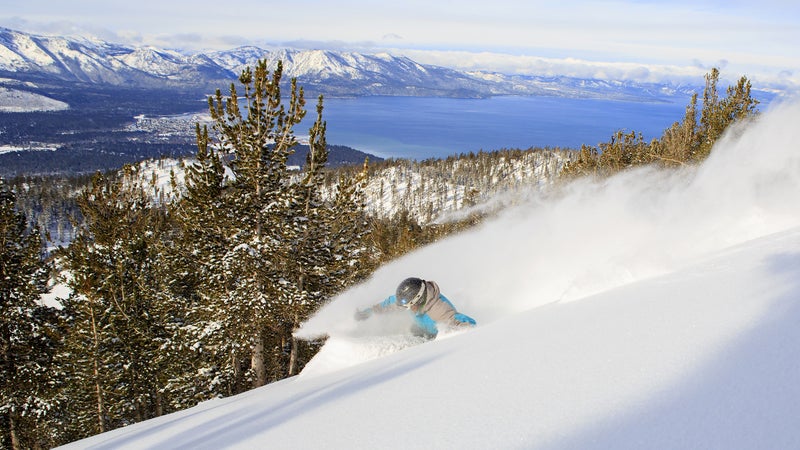
Vertical Rise: 3,500 feet
Acres of Terrain: 4,800
Average Snowfall: 360 inches
straddles the state line between California and Nevada, and you can ride the gondola straight from a casino-studded main drag (that’s the Nevada side) up into an alpine paradise. From nearly everywhere on the mountain, you’ll be treated to glittering views of Lake Tahoe. The mountain is an intermediate skier’s paradise—they will love the mellow and perfectly groomed runs off Dipper and Tamarack lifts—and experts can spend all day hunting for fresh snow in the trees in Mott and Killebrew Canyons. It’s worth the trek to the California side of the resort for a chance to cruise Ellie’s or hit the jumps in the High Roller Park. Stay at , a hip renovated lodge with fondue dinners in walking distance to the gondola. —M.M.
Must-Ski Run: Gunbarrel is the mountain’s most legendary mogul run. Each spring, the resort hosts the Gunbarrel 25 to see who’s hardy enough to lap the slope 25 times.
Best Après: The mid-mountain Tamarack Lodge hosts notoriously wild Unbuckle après parties on weekends, with hula-hooping Heavenly Angels, DJs, and drink specials.
Local Tip: Perennial favorite McP’s Taphouse just opened a new, updated location across the street from the village. Go for a pint and a bowl of shepherd’s pie.
Kirkwood
Kirkwood, California
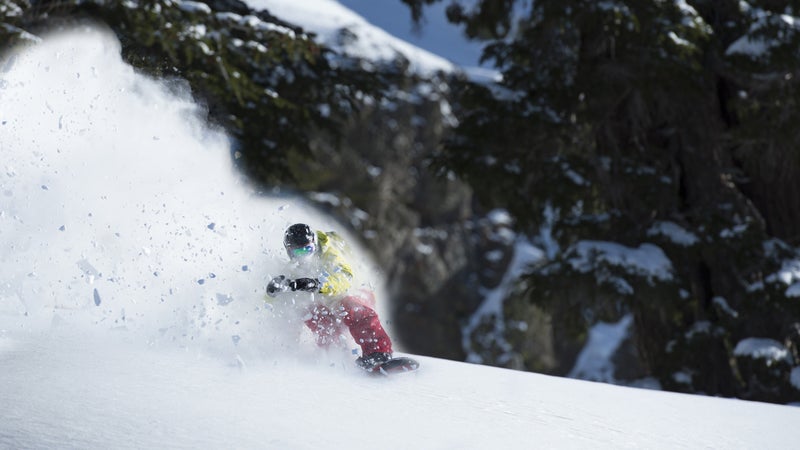
Vertical Rise: 2,000 feet
Acres of Terrain: 2,300
Average Snowfall: 600 inches
is a hidden gem—if it weren’t for Vail Resorts’ purchase of the resort in 2012, people still might not know about the place. It’s located in the middle of nowhere, 35 miles from South Lake Tahoe in a dramatic, off-the-grid valley. Storms whip off the Pacific Crest and nail Kirkwood with more snow than anywhere else in Tahoe, thanks to a geographic blessing locals call “the K Factor.” Freestyle pioneer Glen Plake broke his femur attempting a narrow run called Heart Chute, and his x-ray once hung proudly on the wall of the main pub. On a powder day—and they come frequently—head straight to the Cornice Express and rip laps through the hidden caves of Sentinel Bowl. Lodging and après-ski amenities are pretty minimal, so book a standard condo at the base and get to sleep early in anticipation of first chair. —M.M.
Must-Ski Run: The Wall. It’s steep but not hostile.
Best Après: The Kirkwood Inn, just down the road, was a way station originally built in 1864 (the old cabin still has bullet holes in the wall). Today, it’s a great spot for a drink and a bowl of chili.
Local Tip: Kirkwood’s best breakfast burritos are at the General Store in the old Red Cliffs base lodge.
Mammoth Mountain
Mammoth Lakes, California
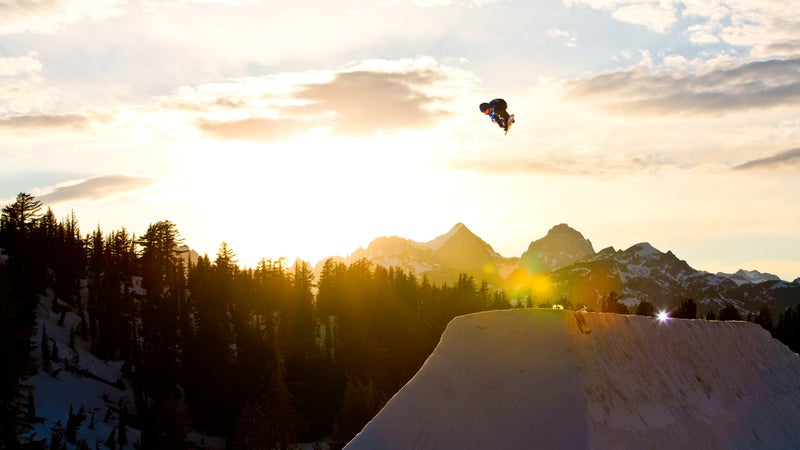
Vertical Rise: 3,100 feet
Acres of Terrain: 3,500
Average Snowfall: 400 inches
From the top of the Panorama gondola at 11,053 feet—the highest elevation of any ski area in California—you’ll get a 360-degree view of the eastern Sierra Nevada, and feels big enough to accommodate all of Los Angeles. From there, ride Climax for steep, wide-open turns, then challenge yourself in the chutes off Chair 23. Intermediates can enjoy the entire lower flanks of the cone-shaped volcanic mountain, like the aptly named Cloud 9. The place can fill up with SoCal throngs on weekends, but the mountain is big enough to disperse everyone. On busier days, sneak away to the back side’s Chair 14 for bowl or glade skiing all to yourself. Stay in town near the base of the village gondola for easy access to the mountain, or check into the historic near the original base lodge. —M.M.
Must-Ski Run: Dave’s Run, named after Mammoth founder Dave McCoy, is a classic run—scenic views, reliably good snow, and wide-open terrain.
Best Après: At Campo in the village, you can get platters of Italian salumi, wood-fired pizzas, and a lively scene.
Local Tip: Mammoth is home to some of the best natural hot springs in ski country. Many steaming-hot pools dot the byways off Benton Crossing Road behind the Mammoth airport.
Mount Bachelor
Deschutes County, Oregon
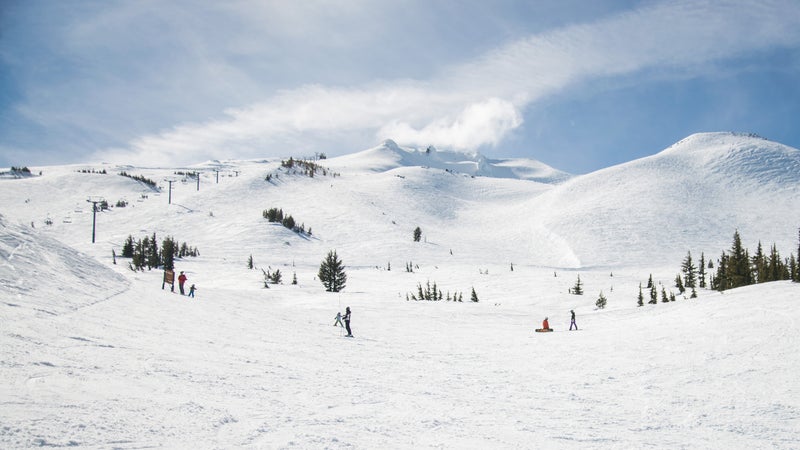
Vertical Rise: 3,365 feet
Acres of Terrain: 3,683
Average Snowfall: 462 inches
is a dormant volcano, so the top third of the cone-shaped mountain is above tree line—you pick your path down natural gullies and into the ponderosa pines, where the tree-skiing transforms from open and flowing to tighter and more technical. Easier terrain makes up only 15 percent of the 88 runs, but families can still find groomers to cruise, like Marshmallow and Avalanche, on the northeast side of the mountain. The area has a laid-back feel: no fancy dining options or ski-in lodging. You’ll want to stay a half-hour away in Bend—it’s a fun mountain town, and most properties have shuttles up to the mountain. —Kľ±łľĚýąółÜ±ô±ô±đ°ů
Must-Ski Run: Pinnacles into the Cirque from Summit chair is the classic above-tree-line expert run.
Best Après: Clearing Rock Bar in the West Village Lodge serves a full complement of brews from Deschutes, down the road in Bend.
Local Tip: If you’re feeling adventurous, take the ten-minute bootpack up to the true summit of the volcanic cone for a memorable descent.
Northstar
Truckee, California
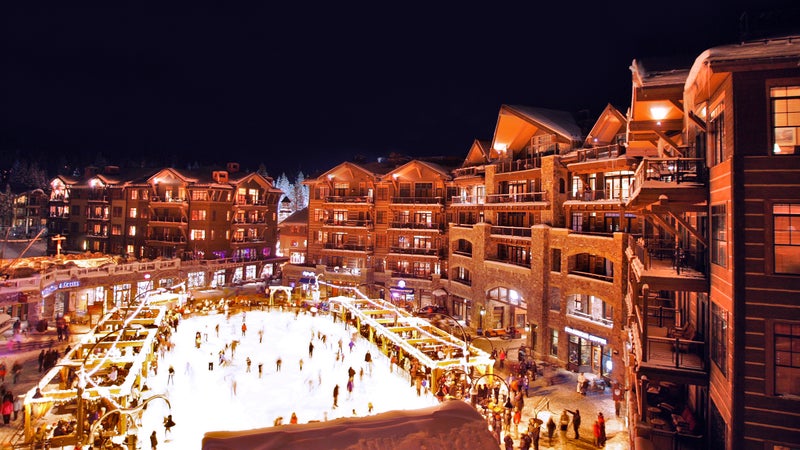
Vertical Rise: 2,280 feet
Acres of Terrain: 3,170
Average Snowfall: 350 inches
Start your morning with a stuffed breakfast burrito from Earthly Delights, then spend the rest of your day on the upper slopes, only returning to the base village at day’s end for après-ski. Known as Tahoe’s most family-friendly resort, is as well known for its ice skating and fireside s’mores as it is for its impeccably groomed runs. That’s not to say there’s no challenging terrain: experts should head to the backside for the rugged off-piste glades of Sawtooth Ridge with run names like Challenger and Burnout. Midday, stop for a lunch of burgers or a salad at the on-mountain Zephyr Lodge, which has great views of the Sierra Nevada. Or swing by the mid-mountain Ritz-Carlton: it’s the world’s least likely spot for excellent St. Louis–style barbecue. —M.M.
Must-Ski Run: Grouse Alley off the Comstock Express offers an approachable, sustained descent from the resort’s pinnacle.
Best Après: The Overlook Bar above the ice skating rink has a younger, livelier crowd.
Local Tip: Tahoe locals can apply for the Ritz-Carlton’s Resident Card, which gets you half-off dinner on Monday nights at the Ritz’s upscale restaurant, Manzanita, plus free valet service and discounts on rooms and spa treatments.
Sierra-at-Tahoe
Twin Bridges, California
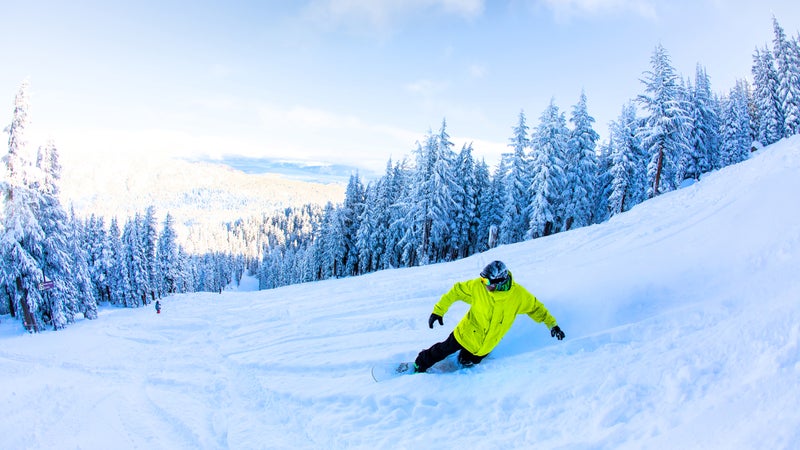
Vertical Rise: 2,212 feet
Acres of Terrain: 2,000
Average Snowfall: 480 inches
, 30 minutes down the road from South Lake Tahoe, is known for its welcoming and quirky vibe—its current social media campaign is #KeepWinterWeird. The skiing isn’t half bad, either: North-facing slopes mean lots of snow, and careful glading makes for ideal tree-skiing. The majority of the mountain is great for intermediates: half the runs are cruisey blues. New skiers and snowboarders will love the 11 acres of designated learning terrain, and for the freestyle set, Sierra-at-Tahoe has six parks and a top-rated halfpipe in Aspen West, where Olympians Maddie Bowman and Hannah Teter train. At lunch, stop on the summit at 360° Smokehouse BBQ for tri-tip, pulled pork, or smoked brisket sandwiches, along with panoramic views of the Lake Tahoe basin.
Must-Ski Run: The steeps of Preachers Passion off the summit.
Best Après: Sierra Pub in the main lodge. Pub Club members get happy hour pricing at all times.
Local Tip: Season pass holders get early loads on some powder days.
Squaw Valley/Alpine Meadows
North Lake Tahoe, California
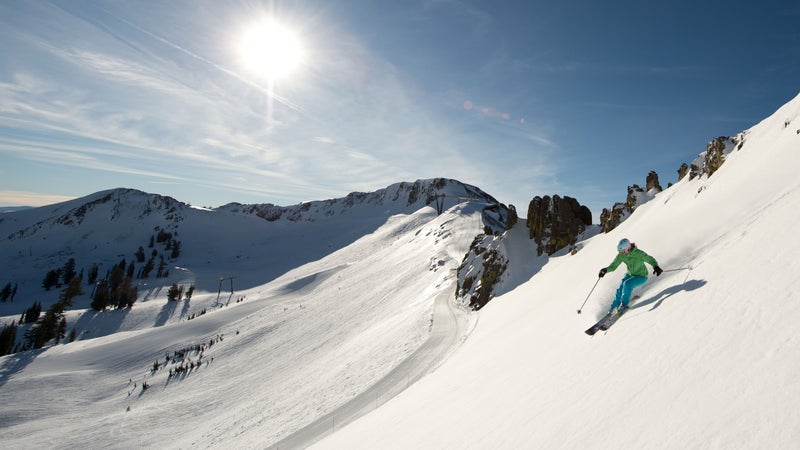
Vertical Rise: 2,850 feet (Squaw Valley);Â 1,802 feet (Alpine Meadows)
Acres of Terrain: 3,600 (Squaw Valley);Â 2,400 (Alpine Meadows)
Average Snowfall: 450 inches
used to be rivaling neighbor resorts, but they’ve been under the same ownership and on one lift ticket since 2011. That means twice as much ridable terrain and double the powder, all for the price of one. A free shuttle connects the two resorts, and an interconnecting gondola is planned for the near future. Squaw is the rowdier, noisier big brother of the two, with steep, ski-movie-worthy terrain like KT-22, Granite Chief, and the Headwall, plus plenty of amenities like a mountain-top hot tub and bar, a village packed with restaurants and shops, and family activities like ice skating and fireworks. Alpine is the sleepier, smaller side: it’s got a low-key vibe, hike-to side bowls, and solid backcountry access. At Alpine, you’ll lap Summit chair and traverse out to freshies in Beaver Bowl or the Saddle. Intermediates will be at home on Roundhouse chair. There’s no lodging at Alpine, so book a room in Squaw and take the shuttle over. The après scene at Alpine is equally mellow—the base lodge bar shuts down early—but Squaw’s party goes all night. —M.M.
Must-Ski Run: Shred (or survive) the west face of KT-22 at Squaw. Keep your eye out for pros skiers in the lift line.
Best Après: Locals head to the Chamois (“the Chammy”) at the base for a slice of pizza and a pitcher of beer.
Local Tip: Grab a European-style lunch mid-mountain at Alpine Meadows. The chalet at the base of Yellow chair was recently renovated and offers raclette and paninis, plus German beers on tap.


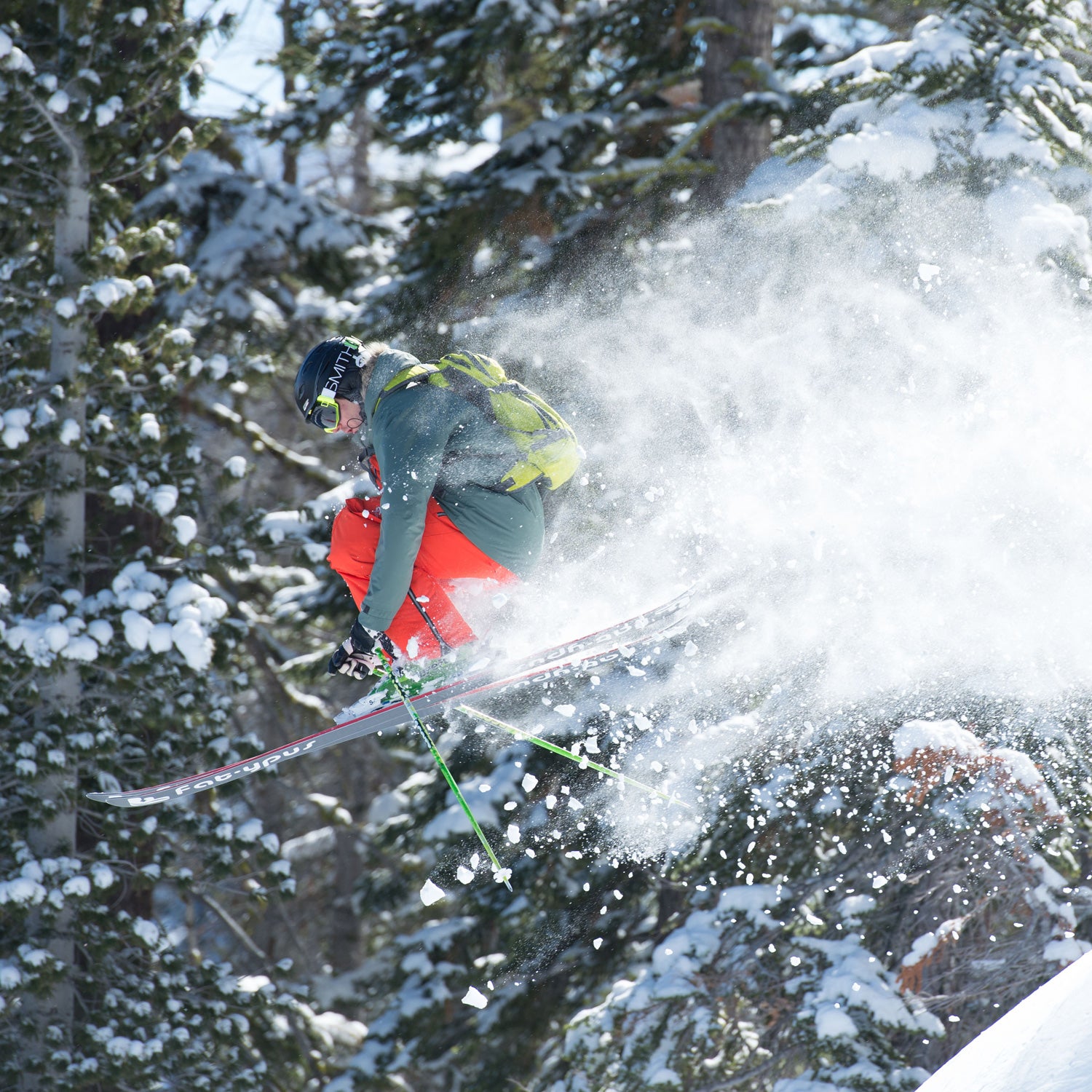
 Check out the rest of our
Check out the rest of our